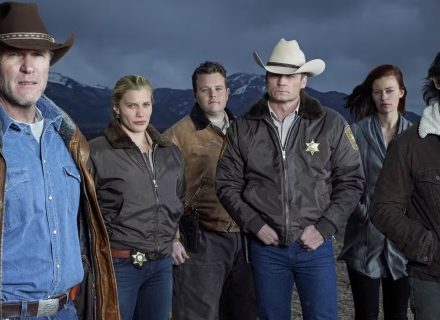Zahn McClarnon Brings Native Voices to the Forefront in Dark Winds

For decades, Zahn McClarnon has been a familiar presence on American television. From Longmire to Westworld, his sharp features and understated intensity have given depth to roles often relegated to the sidelines. But with Dark Winds, AMC’s adaptation of Tony Hillerman’s beloved Leaphorn & Chee detective novels, McClarnon finally steps fully into the spotlight — not only as the series lead but also as a producer.
For McClarnon, the draw was more than career advancement. It was about representation.
“It is the chance to have some more visibility for our community, a chance for us to tell our own stories,” McClarnon said during a recent virtual roundtable with reporters. “Those things are important to me.”
A Landmark for Representation

Dark Winds is rare in modern television: a show with a majority Native American cast and writing team. McClarnon portrays Joe Leaphorn, a Navajo Tribal Police officer navigating both personal and professional challenges in the 1970s Southwest. Alongside Kiowa Gordon as his partner Jim Chee, the series adapts Hillerman’s mysteries while layering in cultural context, spirituality, and history often missing from mainstream depictions of Indigenous life.
For McClarnon, who is of Lakota descent, stepping into the role carried both opportunity and responsibility. “It’s a different hat to wear,” he admitted of his dual role as actor and producer. “It certainly adds a little bit more on your shoulders, a little bit more responsibility. I enjoyed, mainly, the casting part, helping with the casting.”
His involvement behind the camera ensured authenticity in the show’s portrayal of Native communities — something he has long advocated for in an industry notorious for stereotyping or excluding Indigenous voices.
A Setting Ripe for Storytelling
The series is set in the American Southwest of the 1970s, a time and place often overlooked on screen. But for McClarnon and his co-stars, the period offers a treasure trove of storytelling possibilities.
“It’s also tapping into the American Indian Movement, just being able to showcase Native characters during that time frame when that was a very impactful moment in North American history,” one actress explained.

Through its mysteries, Dark Winds explores issues tied directly to that movement — sovereignty, cultural identity, systemic injustice — bringing a political and cultural backdrop into stories that might otherwise be presented as straightforward crime dramas.
“I find that incredible,” the actress added.
The 1970s Through a Native Lens
For McClarnon, the setting carries personal resonance. Born in 1966, he grew up during the turbulent era and vividly remembers the decade’s cultural and artistic vibrancy.
“The history and cinema and art and TV? It was an exciting time in the 1970s,” he reflected. “It was exciting for me to be able to jump back in that period of time. And like Jessica said, there was a lot going on with the Native American culture.”
That sense of rediscovery informs his performance as Leaphorn, a man caught between worlds: balancing duty as a lawman, devotion to family, and a connection to Navajo tradition.
A Career Culmination
Though McClarnon has appeared in acclaimed series — from Fargo to Reservation Dogs — Dark Winds marks his first turn as a series lead. It’s a milestone that feels long overdue, considering his talent and dedication. Yet he remains focused less on personal accolades than on what the series represents for Indigenous communities.
For years, Hollywood’s depiction of Native Americans was filtered through non-Native creators, often flattening characters into caricatures. With Dark Winds, the creative team made a deliberate effort to shift the paradigm, bringing Native perspectives to the forefront not just on-screen but in writers’ rooms and production meetings.
Critical Acclaim and Cultural Impact
Since its debut, Dark Winds has earned critical praise for its atmospheric storytelling, striking desert visuals, and, above all, its authenticity. Viewers and critics alike have lauded McClarnon’s nuanced portrayal of Leaphorn, calling it the role of his career. For Native audiences, the show has become a touchstone, reflecting struggles and triumphs often ignored in mainstream narratives.
The fact that the series is grounded in Hillerman’s novels — which themselves have long attracted both praise and criticism for their portrayal of Navajo culture — adds another layer of complexity. By centering Native actors and creators in the adaptation, Dark Winds reframes those stories through lived experience, offering both homage and corrective.
Looking Ahead
As McClarnon shoulders the dual role of star and producer, he sees Dark Winds as a step toward a broader future for Native representation in Hollywood.
“This is about visibility,” he reiterated. “A chance for us to tell our own stories.”
And for audiences, the series offers more than compelling mysteries. It provides a window into a world often unseen, a reminder that the American West — past and present — cannot be told without Native voices at its heart.
With Monument Valley’s mesas as backdrop and history woven into every frame, Dark Winds does more than entertain. It reclaims space, history, and identity for Native communities, ensuring that their stories are no longer whispers in the margins but central to the narrative.